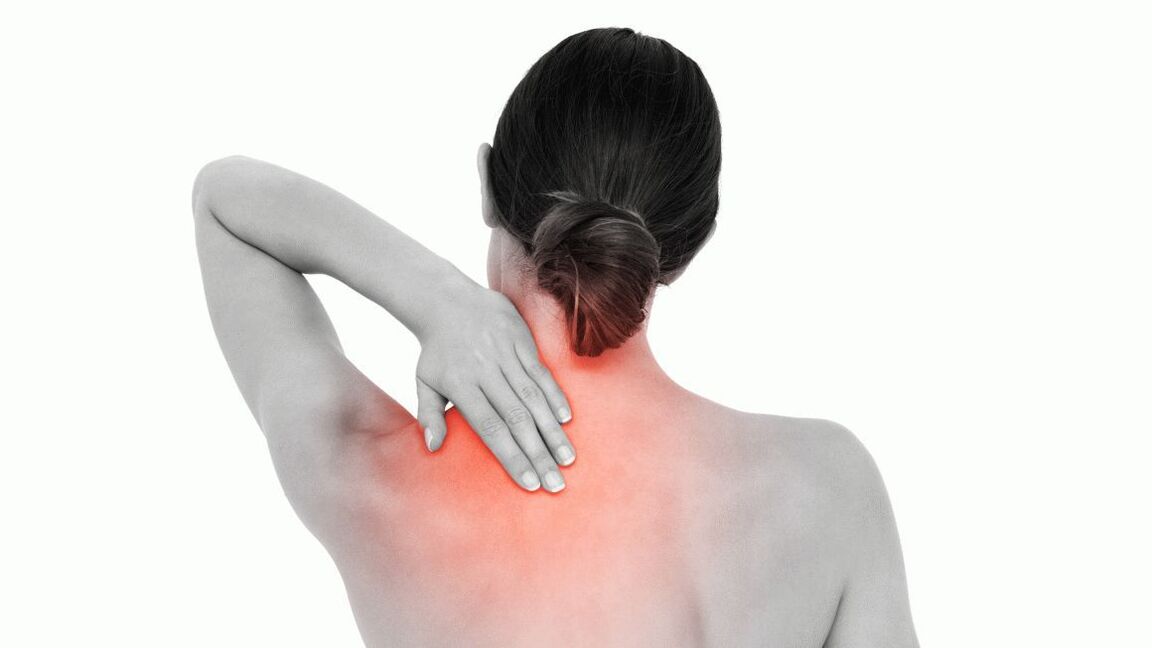
Osteochondrosis is a degenerative-dystrophic lesion of the spinal column, which leads to the destruction of the intervertebral discs with corresponding results. Osteochondrosis "infects" the entire spine, but the symptoms of the disease are most evident when the cervical region, which is the most mobile, and the lumbar region are affected. The thoracic region is the least affected.
Signs of osteochondrosis of the neck are very diverse and often resemble other diseases, which complicates differential diagnosis and early recognition of pathology. In this article, we will discuss in detail how osteochondrosis of the cervical spine is manifested and what will help you suspect this disease.
Degrees of osteochondrosis
Osteochondrosis is a chronic progressive disease that is manifested by periods of remission and exacerbation. Pronounced clinical symptoms do not appear immediately, but after some time, when the degenerative process moves to the 2nd or even 3rd stage.
There are only 4 degrees of pathology:
- The initial stage is characterized by pathological changes inside the intervertebral disc. It loses moisture, which leads to degenerative changes, a decrease in the height of the disc and rupture of the fibrous capsule. As a rule, there are no signs at this stage. The diagnosis can only be made with an MRI of the spine. This is the most favorable stage to start the treatment, since in this case it is possible to completely restore the damaged discs, which is impossible in the future.
- Osteochondrosis of the 2nd degree is characterized by the deterioration of the damage to the intervertebral discs. Their height decreases significantly, which leads to the weakening of back muscles and ligaments. All this leads to instability of the damaged segment of the spinal column, increased mobility of the vertebrae, their displacement and sliding relative to each other and the axis of the spine. As a rule, it is at this stage that the first signs of the disease appear in the form of pain and other symptoms that are specific to injuries of the cervical spine.
- In the 3rd stage, the protrusion and herniation of the intervertebral discs develops. The symptoms of the disease are fully expressed.
- The fourth stage is final. In this case, osteophytes are formed and the spine is deformed. The body tries to somehow stabilize the damaged segment of the spine, due to which osteophytes develop, ossification of ligaments and other processes that lead to stabilization of the spine, but, unfortunately, this process is accompanied by subluxations of the spine and various types and degrees. Deformations of the spine.
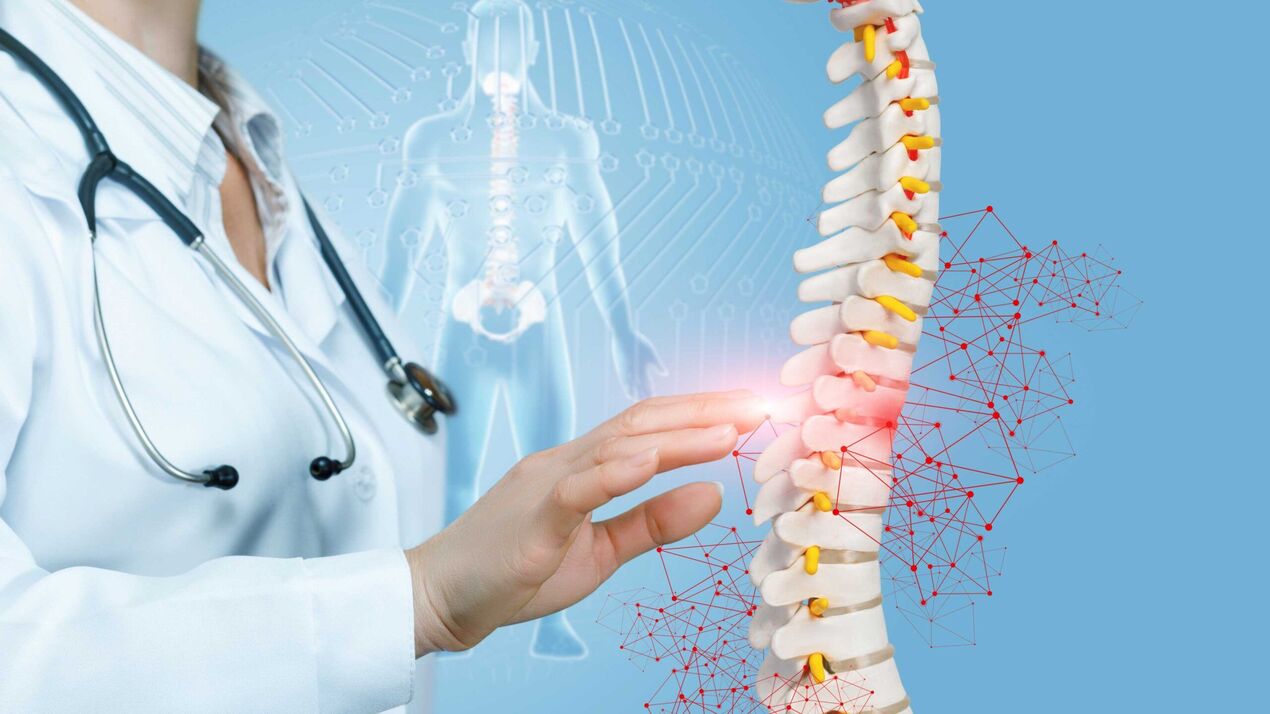
The nature of symptoms of cervical osteochondrosis
Manifestations of osteochondrosis in the cervical spine are associated with 3 mechanisms of the negative impact of this pathology:
- Direct compression of the spinal cord passing through the spinal canal. It should be noted that this happens very rarely with an advanced degenerative process and its complications. Compression of the nerve tissue of the spinal cord can be caused by a large intervertebral hernia that protrudes directly into the lumen of the spinal canal; spinal canal stenosis (narrowing) due to degenerative changes; Dislocations, subluxations, fractures of damaged vertebrae.
- A negative effect on the structures of the peripheral nervous system (spinal cord roots and nerve fibers) coming out of the cervical spine. They can be compressed between adjacent vertebrae or herniated disc bulges and can become inflamed and irritated. All this causes a number of severe symptoms. This is the most common group of signs of cervical osteochondrosis.
- Negative effect on the blood vessels that pass near the damaged area of the spine. In particular, one very important arterial vessel has clinical significance - the vertebral artery, which passes through the openings of the transverse processes of the cervical vertebrae into the skull cavity and supplies blood to the back third of the brain and the cerebrum.
Let's take a closer look at each group of mechanisms and what symptoms they cause.
Symptoms associated with spinal cord injury
As already mentioned, compression of the spinal cord with cervical osteochondrosis is very rare. This is a very serious condition that can cost a person not only his health, but also his life.
Damage to the upper cervical spine is life-threatening. Cardiovascular and respiratory centers suffer, which leads to instant death. When the spinal cord is compressed at the level of 3-4 segments, tetraplegia develops (paralysis of all limbs and muscles below the injury). The respiratory muscles and diaphragm are also affected, which can lead to respiratory arrest and death.
If the injury occurred at the level of the 4th-5th segment of the spinal cord, tetraplegia develops, but without breathing disorders. When the 5-8 segments of the spinal cord are compressed, different groups of muscles of the upper limbs are affected and there is paraparesis of the legs and disruption of the pelvic organs.
Symptoms associated with nerve damage
Pain syndrome
First of all, it should be noted the pain syndrome, which can be chronic (cervicalgia) and acute lumbago (cervicalgia). Pain occurs in the neck, head and occipital part of the shoulder girdle. It is usually caused by irritation, compression and inflammation of the nerve roots of the cervical spine, as well as pathological spasm of the muscles in this area, which are innervated by these nerves.
The pain associated with cervicalgia is almost constant, painful and of varying intensity. As a rule, the pain syndrome can be transferred. Occurs or is aggravated by sudden head movements, turns, and tilts. Movements in the neck are accompanied by a characteristic crackling sound.
Cervical pain occurs suddenly in the form of a shooting or electric shock. It is very intense, it goes on one hand. Lasts for a few seconds or minutes, then gives way to cervicalgia. This is usually caused by sudden movement and compression of the nerve.
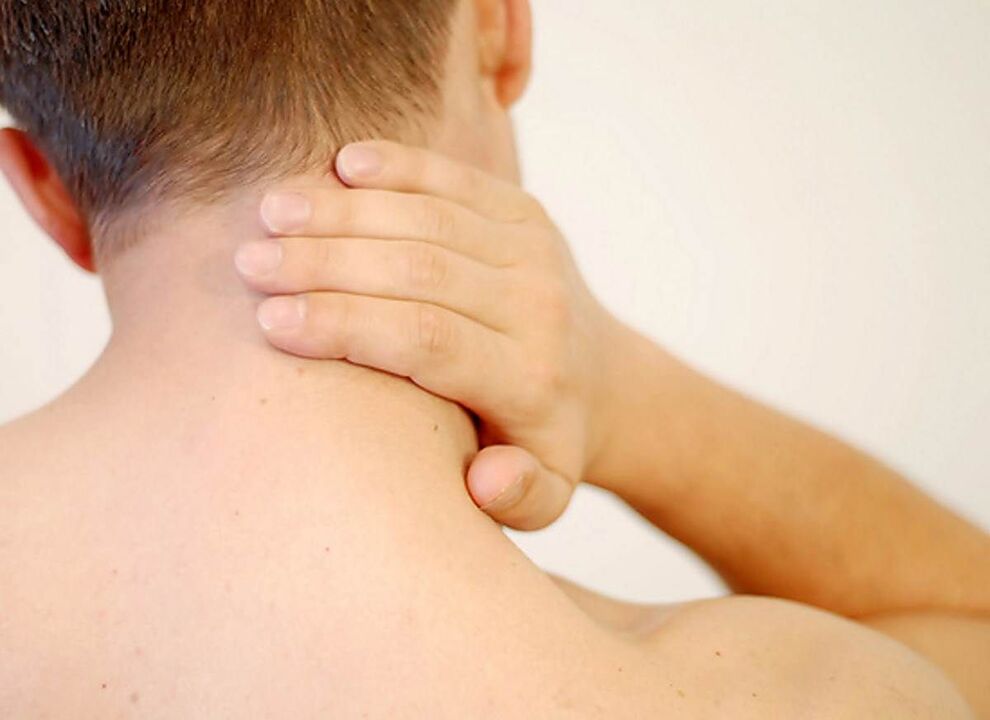
Radical syndromes
All major nerves of the upper extremity (medial, ulnar, and brachial) arise from nerve fibers that exit the cervical spine. Thus, in the presence of cervical osteochondrosis, these nerve structures can be affected. All these nerves are mixed, that is, they have both sensory and motor function. Depending on which root is damaged, symptoms vary. For example, the sensitivity of the 2nd or 3rd fingers may be lost and one or more muscles may become paralyzed. All these signs of nerve damage are classified as separate syndromes that can only be diagnosed by a neurologist.
Occipital neuralgia
Occipital neuralgia develops when the greater and lesser occipital nerves, which are formed by the 2nd, 3rd and 4th pairs of nerves of the cervical spine, are damaged. When these structures are compressed, irritated or inflamed due to the degenerative process of the spine, headaches appear in the back of the head, which women often complain about.
This pain is so typical that only its description allows the correct diagnosis to be made in 90% of cases. It is also called shooting cranialgia. The pain attack occurs suddenly, has a unilateral localization (rarely it hurts on both sides), patients compare the nature of the pain to an electric shock. The attack lasts a few minutes, but may recur several times a day. Pain appears on the posterior lateral surface of the neck and extends up to the occipital protuberance (repeats the anatomical course of the occipital nerve). At the same time, a sensitivity disorder may develop in the back of the head (numbness, crawling sensation).
Heart syndrome
This name is due to the fact that this manifestation of osteochondrosis of the cervical spine is very similar to angina and other heart diseases. The cause of this phenomenon is damage to the nerve fiber that innervates the main muscle of the chest and the phrenic nerve, whose fibers are woven into the pericardium of the heart.
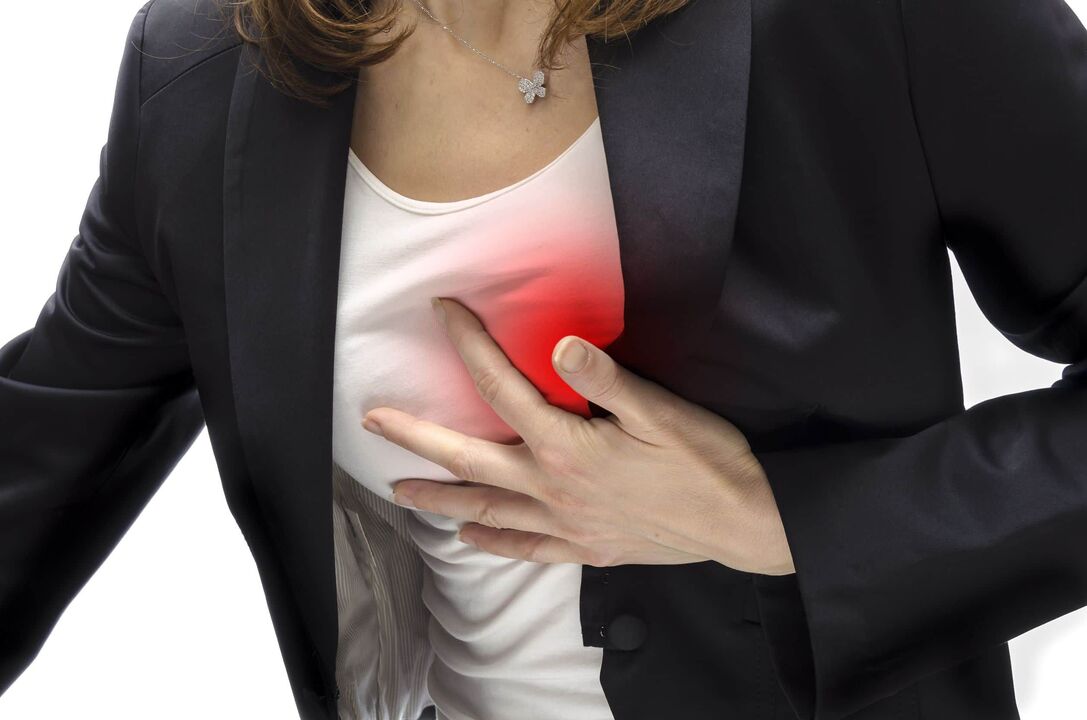
The cause of the pain is a spasm of the main muscle of the chest due to pathological impulses along the damaged nerve fiber. At the same time, patients very often confuse such pain with heart pain. Unlike coronary pain, the pain syndrome with cervical osteochondrosis has a long duration (sometimes several hours or days), which does not occur in angina pectoris, is not related to physical activity, but is related to body position. The pain is aggravated by sudden movements, turning the head, coughing, sneezing, which does not happen in angina pectoris. Antianginal drugs (nitroglycerin, etc. ) will not be effective.
Important! In any case, such symptoms require thorough differential diagnosis, as atypical variants of angina pectoris and heart attack also appear. In order not to miss a serious disease, you should first do an ECG. Pathological changes are not observed during osteochondrosis.
Symptoms associated with vertebral artery damage
Compression of the vertebral artery during cervical osteochondrosis can cause many unpleasant symptoms, which are mainly related to a decrease in blood flow and hypoxia of the part of the brain that is fed by this vessel (back third of the head and cerebellum).
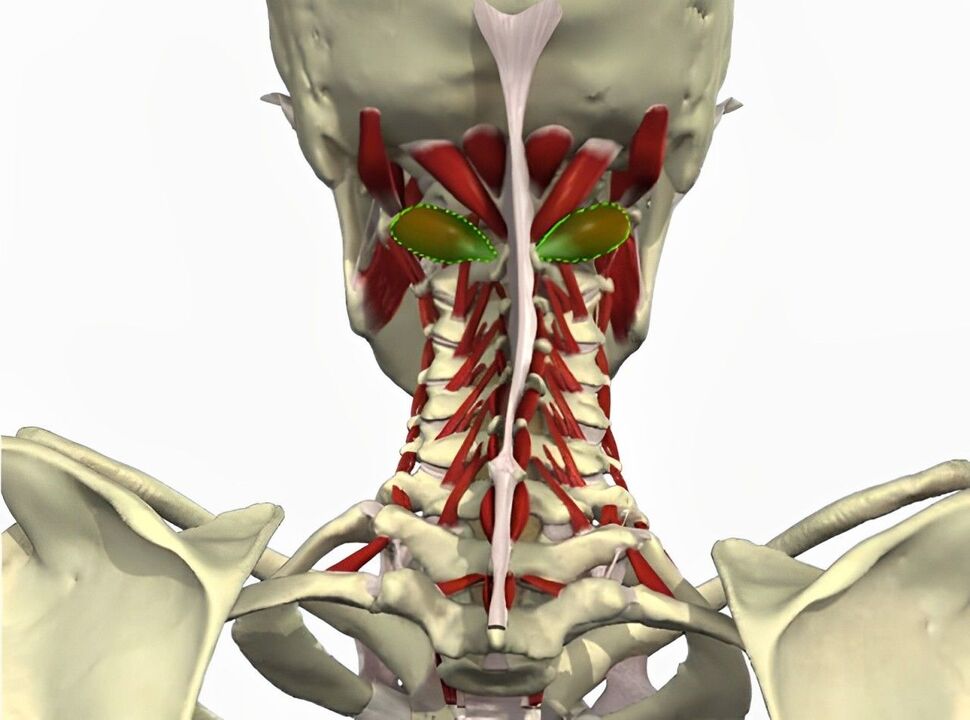
Symptoms of vertebral artery syndrome:
- Diffuse or pulsating headache in the back of the head, temples and parietal region;
- dizziness;
- nausea and vomiting;
- visual disturbances;
- tinnitus, decreased hearing acuity;
- Violation of coordination and balance;
- The development of drop attacks (a sudden fall without loss of consciousness due to a sudden turn of the head);
- Memory impairment, performance impairment, ability to concentrate.
It is important to remember! With pronounced changes in the spine, the artery can be compressed to such an extent that it will lead to the development of an ischemic stroke in the vertebrobasilar region of the brain. Therefore, it is important to suspect the pathology in time and take all the necessary measures to improve the health of the spine and prevent further pathological changes.
FAQ
What are the symptoms of cervical osteochondrosis?
Symptoms of cervical osteochondrosis can include neck pain and stiffness, headaches, dizziness, tinnitus, and tingling or numbness in the arms and shoulders.
How can you relieve the symptoms of cervical osteochondrosis?
To alleviate the symptoms of cervical osteochondrosis, it is recommended to exercise, maintain a correct posture, avoid sitting in one position for a long time, use special pillows and mattresses, as well as use physiotherapy methods.
Useful tips
Tip #1
Pay attention to pain in the neck, shoulders and arms, which can be symptoms of cervical osteochondrosis. Pain can be sharp, dull or localized at certain points.
Tip #2
Pay attention to numbness or weakness in the arms, fingers or shoulders, as this may be due to cervical osteochondrosis.
Tip #3
Pay attention to headaches, dizziness, and tinnitus, as these symptoms may be associated with cervical osteochondrosis.














































